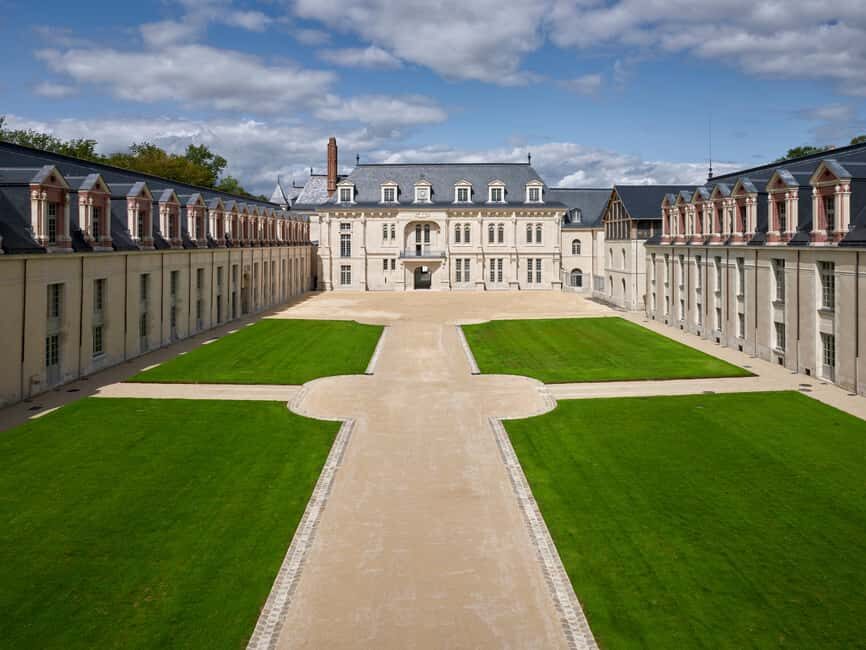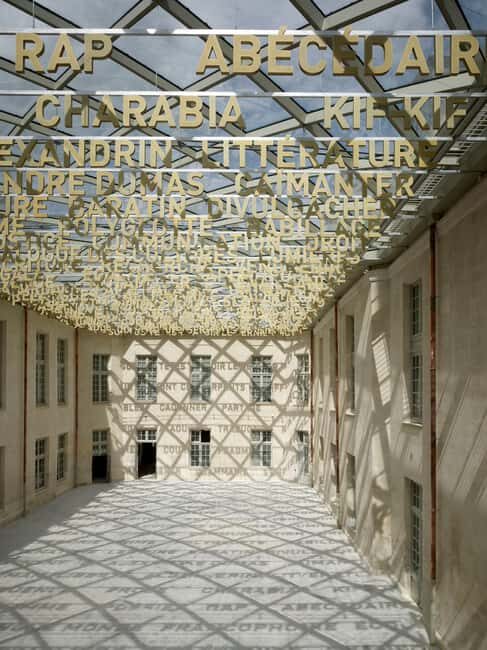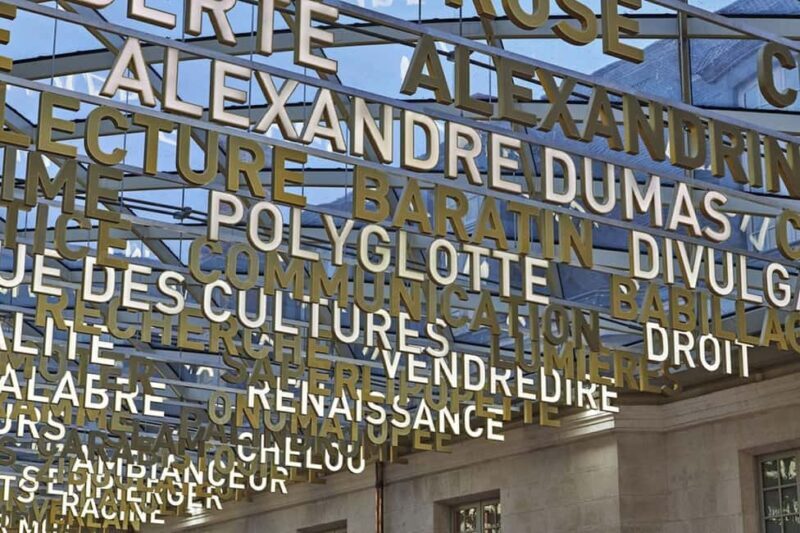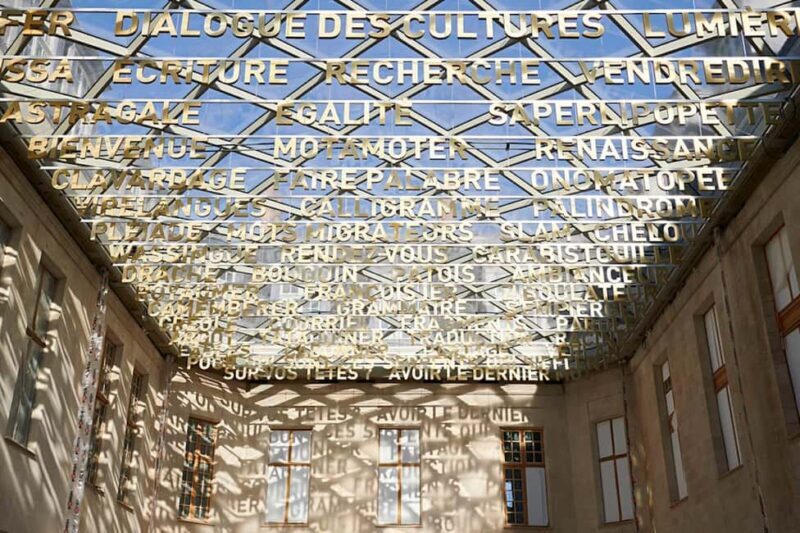Physical Address
304 North Cardinal St.
Dorchester Center, MA 02124
Physical Address
304 North Cardinal St.
Dorchester Center, MA 02124

Explore the historic Villers-Cotterêts castle and the Cité internationale de la langue française for a blend of Renaissance architecture, French history, and cultural insights.
Discovering the Cité internationale de la langue française: A Deep Dive into France’s Historic Heart
Visiting the Cité internationale de la langue française offers an engaging journey into France’s noble past, especially if you’re intrigued by royal castles and the evolution of language and culture. While the main attraction is the historic Villers-Cotterêts castle, the site also boasts a fascinating connection to French identity through its dedicated language museum.
What catches our eye about this experience? It’s the chance to walk through a castle that’s been meticulously preserved and partly restored after surviving the devastation of the Great War. Plus, the Renaissance architecture and the castle’s association with François I make it a compelling stop for history lovers.
That said, the visit might feel a bit cold or institutional to some, especially for those expecting a lively, interactive experience. It’s more suited to visitors who appreciate historical architecture, academic exhibits, and quiet reflection. Perfect for history buffs, students, or families eager to learn in a serene setting.

The Villers-Cotterêts castle is well worth a visit for those interested in French history and architecture. From the moment you arrive, it’s clear that this site holds a special place in the story of France. The castle’s origins date back to a time when kings, hunting, and territorial pride shaped the landscape. It’s fascinating to think that Dagobert I hunted here as early as 632, giving you a sense of the site’s ancient roots, although the castle we see today is mainly Renaissance.
The highlight of the castle’s history is its association with François I, one of France’s most iconic monarchs. At just three years old, he inherited the duchy of Valois, with Villers-Cotterêts as a key residence. In 1528, shortly after suffering a significant defeat at Pavia, the king launched an ambitious expansion of the castle complex. This period saw the construction of the castle’s impressive Renaissance features, including the chapel—the first in France to break away from Gothic traditions.
Visitors will appreciate that the castle’s design signals both royal power and artistic achievement. The decorative elements, like the salamander emblem, fleur-de-lis, and crowned initials, reflect monarchic pride and identity. Over the centuries, renowned architects like Philibert Delorme and André Le Nôtre contributed to the castle’s evolution, transforming not just the structure but also the surrounding park, which echoes the grandeur of Versailles.
Your entrance ticket, priced at just $11, provides access to a self-guided tour of the castle and its grounds. This means you can explore at your own pace, soaking in the architecture and exhibits without the pressure of a group. The ticket also grants entry during regular hours, with the restriction that access is cut off 60 minutes before closing.
The site is wheelchair accessible, making it inclusive for all visitors. However, note that live guides are not included, so if you prefer a guided experience, you might need to arrange this separately.
As you wander the castle, you’ll notice the rich decoration and architectural details that speak to its Renaissance origins. You might find yourself admiring the imposing stonework, ornate windows, and carefully preserved interiors. The hallways and rooms, though not overly furnished, convey the majesty of the period and give a sense of royal life.
The language museum offers exhibits on the evolution of French, highlighting the importance of language in national identity. Some reviews mention that the museum has interactive games, making the experience more engaging, especially for younger visitors or those interested in linguistics.
While reviews are mixed—some praising the stunning architecture and knowledgeable guides (although guides are not included)—others feel the site could benefit from more lively displays or guided tours. One visitor described it as a place to appreciate “beauty, splendor, and the grandiose,” while another lamented it feeling “cold and institutional.”
The best way to get the most out of your visit? Take your time to explore the grounds, read the exhibits carefully, and, if possible, do a little homework beforehand on the castle’s history. The site’s peaceful atmosphere lends itself well to reflection, but those looking for an energetic or highly interactive experience might find it less stimulating.
At only $11, this tour offers a surprisingly affordable glimpse into a significant part of France’s royal heritage. Compared to other historic sites, the cost is modest, especially considering the impressive architecture and the chance to learn about the French language’s role in national identity. If you’re a history or architecture enthusiast, this is a solid value.
Some visitors suggest that combining this visit with nearby sites or purchasing tickets that include temporary exhibitions could enhance the experience, especially if you prefer a more comprehensive cultural outing.

This site appeals most to history buffs, architecture lovers, and those with an interest in French culture. It’s ideal for travelers who value self-guided exploration and want to enjoy a serene, educational environment. The site’s accessibility and price point make it suitable for families, students, and curious travelers looking for an authentic, less commercialized experience.
However, if you’re expecting a lively, interactive, or guided tour, you might find the experience a bit quiet or academic. It’s best suited for those who enjoy discovering at their own pace and appreciating historical details that might be overlooked on a guided group tour.

The Villers-Cotterêts castle and the Cité internationale de la langue française present a compelling mix of royal history, Renaissance architecture, and linguistic culture. It’s a place where you can walk through centuries of French history, admire masterful architecture, and gain insights into the evolution of one of the world’s most influential languages.
The site’s affordable price, accessible layout, and peaceful ambiance make it an attractive option for a day trip. While some visitors wish for more interactive features or guided storytelling, the quiet beauty and historical significance of the castle hold their own charm.
If you’re into France’s royal past, Renaissance art, or linguistic history, this site deserves a spot on your itinerary. Just bring your curiosity and patience, and you’ll walk away with a deeper appreciation for France’s cultural legacy.

Is the entrance ticket for the castle self-guided?
Yes, your ticket grants access to a self-guided tour of the castle and grounds.
How much does the ticket cost?
The ticket is priced at $11 per person, offering good value for the experience.
Are there guided tours available?
No, the ticket does not include guides; the tour is self-guided. However, some reviews mention knowledgeable guides, which might be available through other arrangements.
Is the site accessible for wheelchair users?
Yes, the site is wheelchair accessible, making it easier for all visitors to explore.
What are the opening hours?
Check availability for start times, but keep in mind the last access is 60 minutes before closing. The site is closed every Monday (except Easter and Pentecost Monday), January 1, May 1, and December 25.
Are there discounts for certain visitors?
Yes, free entry is available for visitors under 18 or EU citizens under 26 with valid photo ID. Also, free entrance occurs during the first Sunday of several months and European Heritage Days.
Can I visit the park without a ticket?
Yes, the grounds are freely accessible, but the castle and museum require the paid ticket.
Is there a recommended age group?
The site is suitable for all ages, especially those interested in history, architecture, and language.
Can I combine this visit with other nearby attractions?
Some visitors recommend combining it with nearby sites or exhibitions for a fuller experience.
Is there a dress code or special attire needed?
No specific dress code; comfortable shoes are recommended for walking around the grounds and castle interiors.
Visiting the Villers-Cotterêts offers a unique glimpse into France’s past, blending architectural beauty with cultural and linguistic significance. Whether you’re a history enthusiast or simply exploring the Hauts-de-France region, this site provides a peaceful, enriching experience worth your time.